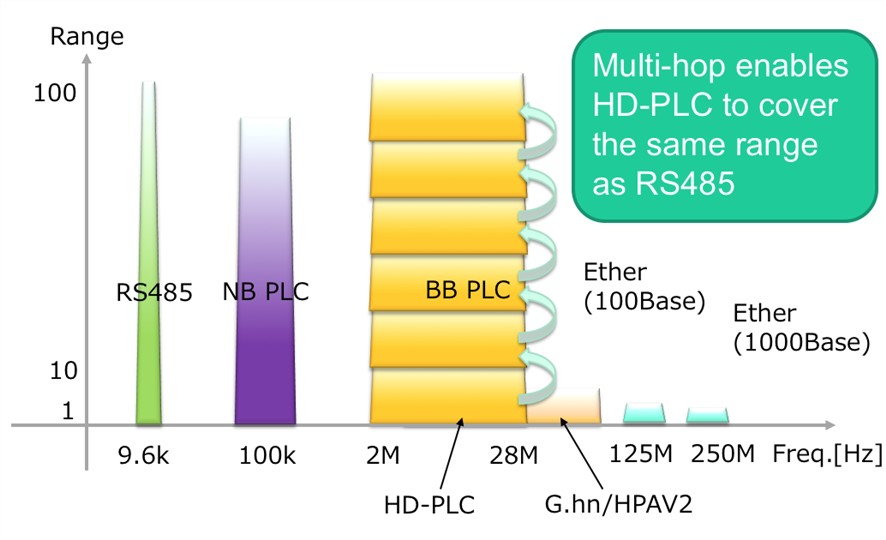ITU-T G.9905
ITU-T G.9905
HD-PLC supports ITUT Recommendation G.9905, a robust and low-overhead multi-hop routing protocol that enables large scale HD-PLC networks.
Presentation
Recommendation ITU-T G.9905 specifies centralized metric based source routing (CMSR), a proactive, layer 2 multi-hop routing protocol. CMSR is a proactive routing protocol which can find and maintain reliable routes considering the link quality of both directions. The routing control packet overhead of CMSR is quite low compared to existing proactive routing protocols such as optimized link state routing (OLSR), so that it can be applied for large-scale networks even on narrow band power line communication (PLC) networks.
HD-PLC Implementation
At the heart of HD-PLC is an innovative Centralized Matrix-based Source Routing (CMSR) scheme, as defined in the ITU G.9905 international standard. This multi-hop functionality dramatically increases network range, robustness, speed, and simplicity.
Thanks to this advancement, HD-PLC is able to support over 1000 nodes, distances up to 10 kilometers, along with the advanced security protections required in today’s connected world.
HD-PLC supports up to 10 hops, enabling system integrators to expand networks to up to 1024 nodes. In this case, throughput is reduced (10Mbps, min), but system integrators gain the ability to quickly deploy large systems without time-consuming network planning or costly devices like switches and routers.

Multi-hop technology takes the guesswork out of network planning and design by enabling any node to act as a repeater. With this technology, the nodes in the network dynamically calculate route cost and select the best route based on link quality. This eliminates bottlenecks and improves robustness, since the network will automatically reroute traffic if any given node fails.
Multi-hop technology also brings the benefits of mesh networking to wired networks. System integrators no longer need to spend days planning and configuring their control networks. With HD-PLC, they can simply plug in their devices and let the network take care of the rest, automatically calculating route cost and dynamically optimizing traffic.
Market Implications
Tomorrow’s smart city and smart building networks will be IP-based. IP connectivity enables system integrators to bring together the many islands of automation that exist among today’s building automation systems. It also facilitates the integration of operational networks with information networks, enabling project owners to fully harness the power of the Cloud and Big Data.
An IP-based protocol, HD-PLC meets the demands of tomorrow’s applications with an integrated network bridge functionality that enables any terminal to act as a bridge between PLC networks and Ethernet and serial networks. This makes network design and integration easy—and eliminates costly gateway devices, complicated wiring, and complex software development.
*Illustration and text: HD-PLC Alliance and MegaChips Corporation
Resources
G.9905 (08/13)
Title: Centralized metric-based source routing
Approved in 2013-08-29
G.9905 (2013) Amendment 1 (11/16)
Title: Centralized metric-based source routing – Amendment 1
Approved in 2016-11-13